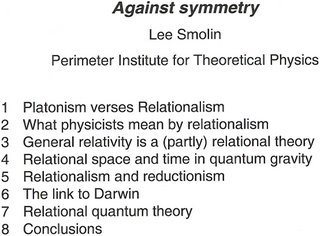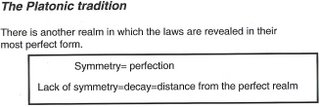
I wanted to offer a perspective that recognizes the coin as a basis of the reality much as strings would be as contingent products of the whole theory of economics. So in this context that quantum mechanically one perceive the basis of this exploration into the vast transactions taking place within a larger framework, is the idea that I have would have to include all possible transaction much as E8 would encapsulate. So it becomes an object of the economic system.
I take to heart, what fear may be induced into the society, is an assessment of where stand now, which allows a projection into the future. This then, is the particulate discriminant of money as a basis of that society, that we now ask while facing the object of E8, that such a universe in expression is recognized as topics discussed as theorems produced. Are "Transactional Phase Changes" in the economy.
I end this blog posting encapsulating these Transactional Phase Changes in context of the structure accumulative too, and as an object of the whole system. Not yet have I described the quality here to be taken into account while only mentioning the mechanics of this Monetary Universe.
May 1 - 4, 2009
Perimeter Institute
The Perimeter Institute conference on economics is being organized in an effort to better evaluate the state of economics as a predictive and descriptive science in light of the current market crisis. We believe that this requires careful, dispassionate discussion, in an atmosphere governed by the modesty and open mindedness that characterizes the scientific community. To do this we aim to bring leading economists and theorists of finance together with physicists, mathematicians, biologists and computer scientists to evaluate current theories of markets, and identify key issues that can motivate new directions for research.
The conference will begin on May 1, 2009, with a day of invited talks by leading experts to a public audience of around 200 on the status of economic and financial theory in light of the crisis. We will then continue for three days of focused discussion and workshops with an invited group of around 30, aimed at defining research agendas that address that question and beginning work on them.
To register for this conference, please click here.
International Organizing Committee:
Mike Brown, ex CFO Microsoft, ex Chair NASDAQ
Richard Freeman, Harvard University
Bill Janeway, Senior Advisor and Partner at Warburg Pincus LLC and Cambridge University
Stuart Kauffman, University of Calgary
Zoe-Vonna Palmrose, University of Southern California
Lee Smolin, Perimeter Institute
Eric Weinstein, Natron Group
Eric Weinstein's talk on “Gauge Theory and Inflation(link)
Abstract: The close relationship between geometry and fundamental physics can be seen from surveying the basic equations underlying the known forces of nature. What has made these repeated appearances of gauge fields and curvature tensors particularly striking in recent years is lack of any comparable applications outside of the Standard Model and General Relativity. In this talk we will pose the question of whether Yang-Mills theory is simply a unifying principle with application well beyond its current use by exhibiting unreasonably effective applications of Gauge Theory beyond those familiar in the Natural Sciences. Armed with these examples, we will then revisit the question about what is most truly special about the Standard Model and Relativity.
In law and economics, the Coase theorem, attributed to Ronald Coase, describes the economic efficiency of an economic allocation or outcome in the presence of externalities. The theorem states that when trade in an externality is possible and there are no transaction costs, bargaining will lead to an efficient outcome regardless of the initial allocation of property rights. In practice, obstacles to bargaining or poorly defined property rights can prevent Coasian bargaining.This theorem, along with his 1937 paper on the nature of the firm (which also emphasizes the role of transaction costs), earned Coase the 1991 Nobel Prize in Economics. The Coase theorem is an important basis for most modern economic analyses of government regulation, especially in the case of externalities. George Stigler summarized the resolution of the externality problem in the absence of transaction costs in a 1966 economics textbook in terms of private and social cost, and for the first time called it a "theorem". Since the 1960s, a voluminous literature on the Coase theorem and its various interpretations, proofs, and criticism has developed and continues to grow.
Modigliani-Miller theorem
The Modigliani-Miller theorem (of Franco Modigliani, Merton Miller) forms the basis for modern thinking on capital structure. The basic theorem states that, in the absence of taxes, bankruptcy costs, and asymmetric information, and in an efficient market, the value of a firm is unaffected by how that firm is financed.[1] It does not matter if the firm's capital is raised by issuing stock or selling debt. It does not matter what the firm's dividend policy is. Therefore, the Modigliani-Miller theorem is also often called the capital structure irrelevance principle.
Modigliani was awarded the 1985 Nobel Prize in Economics for this and other contributions.
Miller was awarded the 1990 Nobel Prize in Economics, along with Harry Markowitz and William Sharpe, for their "work in the theory of financial economics," with Miller specifically cited for "fundamental contributions to the theory of corporate finance."
Noether's theorem
Noether's theorem (also known as Noether's first theorem) states that any differentiable symmetry of the action of a physical system has a corresponding conservation law. The action of a physical system is an integral of a so-called Lagrangian function, from which the system's behavior can be determined by the principle of least action. This seminal theorem was proven by Emmy Noether in 1915 and published in 1918.[1]
Gauge theory
In physics, gauge theory is a quantum field theory where the Lagrangian is invariant under certain transformations. The transformations (called local gauge transformations) form a Lie group which is referred to as the symmetry group or the gauge group of the theory. For each group parameter there is a corresponding vector field called gauge field which helps to make the Lagrangian gauge invariant. The quanta of the gauge field are called gauge bosons. If the symmetry group is non-commutative, the gauge theory is referred to as non-abelian or Yang-Mills theory. Quantum electrodynamics is an abelian gauge theory with the symmetry group U(1) and one gauge field, the electromagnetic field, with the photon being the gauge boson. The standard model is a non-abelian gauge theory with the symmetry group U(1)×SU(2)×SU(3) and twelve gauge bosons: the photon, three weak bosons Z0 and W^\pm; and eight gluons.
 Appendix, Pg 316, Symmetry and the Beautiful Universe, by Leon M. Lederman and Christopher T. Hill
Appendix, Pg 316, Symmetry and the Beautiful Universe, by Leon M. Lederman and Christopher T. Hill





























